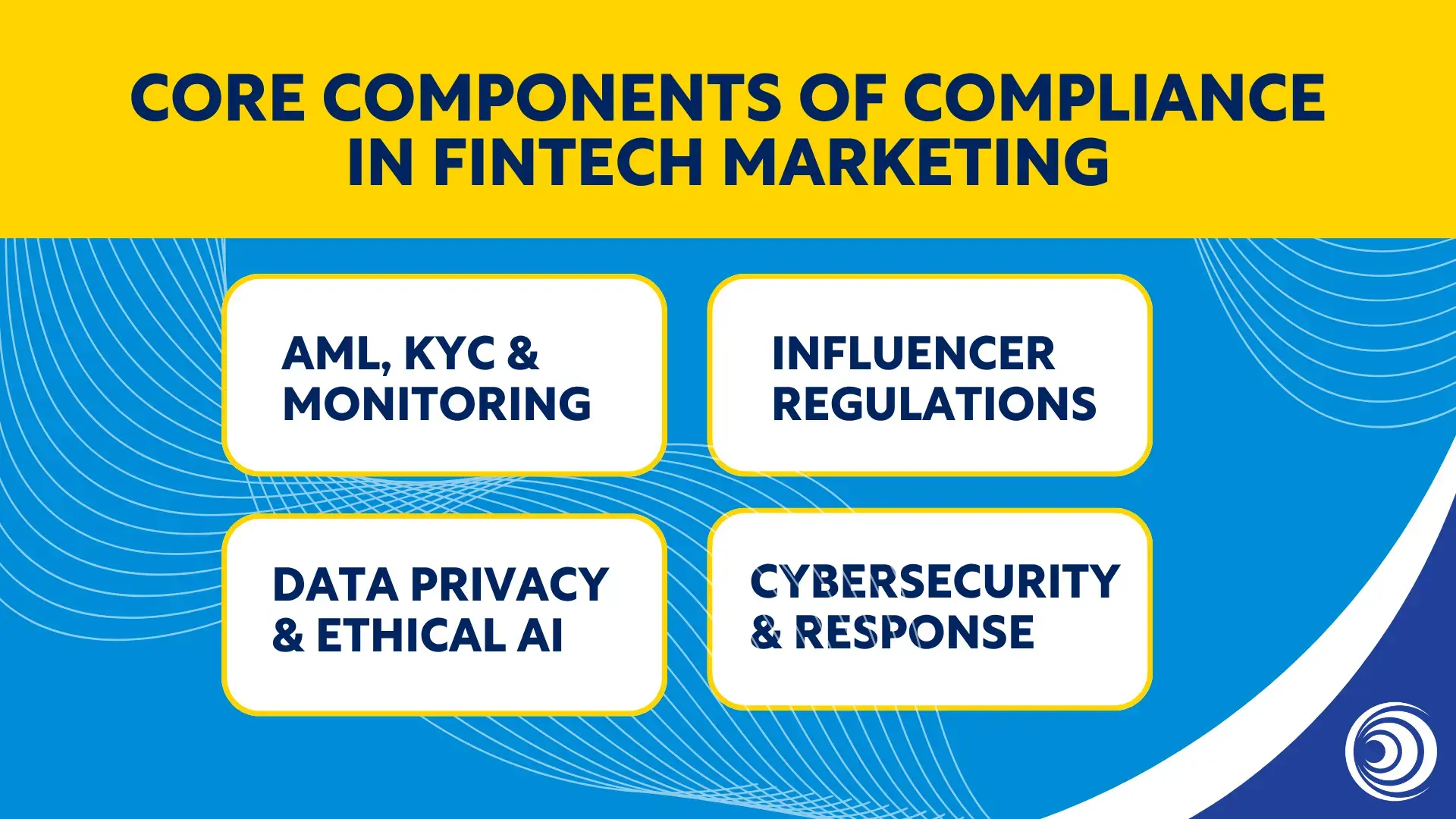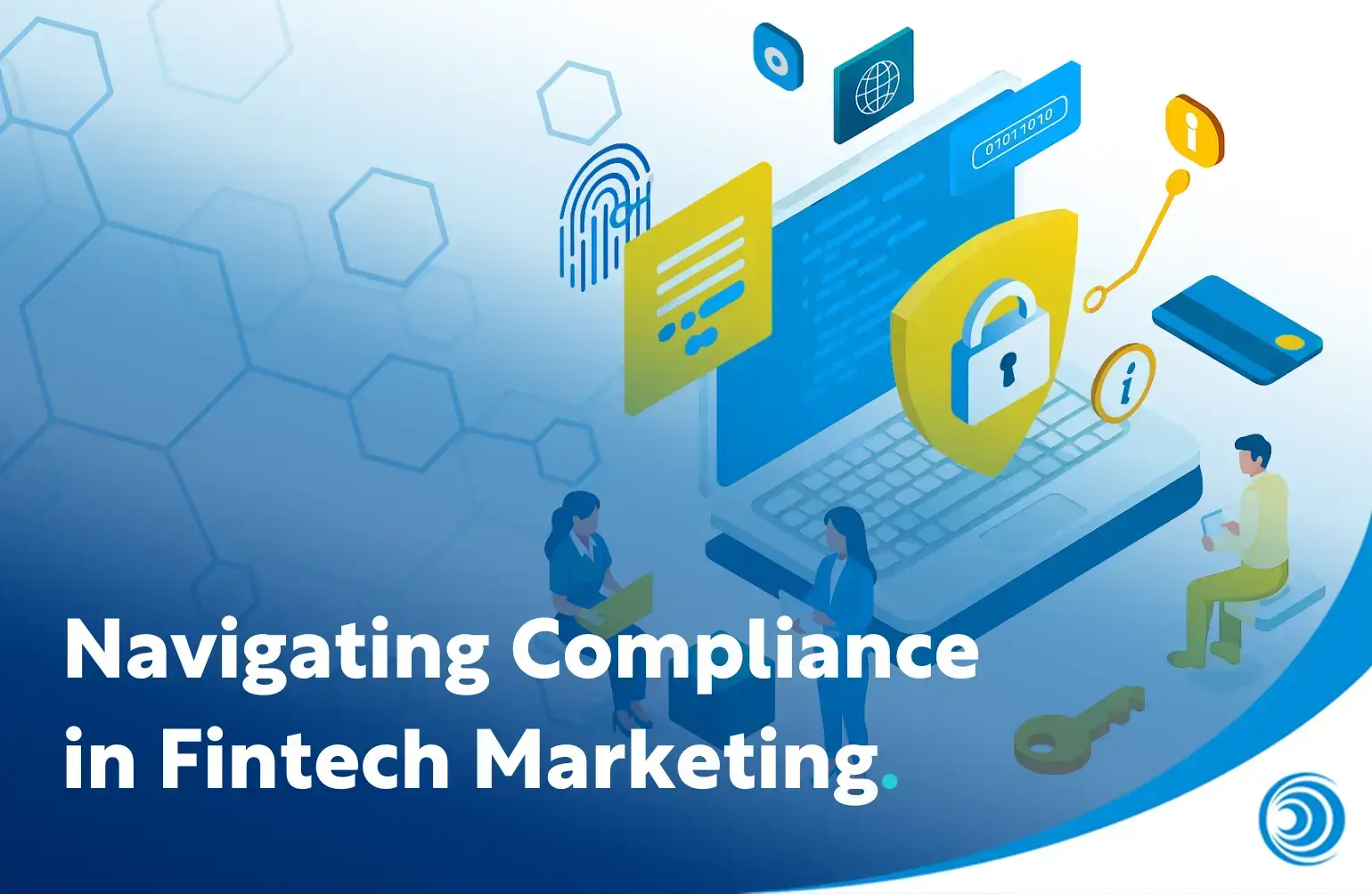- Fintech Design – The New Money Experience - October 9, 2025
- Influencer Marketing for Fintech: Does it Work? - October 3, 2025
- Viva Las Fintech: Money20/20 USA 2025 Is Coming - September 15, 2025
In fintech, trust is the foundation on which everything else is built. Without it, even the smartest products or slickest user experience can collapse under the weight of doubt. And nowhere is this more visible than in marketing.
How the FCA’s Consumer Duty Impacts Fintech Marketing
In the UK, the FCA’s Consumer Duty Regulation requires financial firms to ensure that communications are clear, fair, and not misleading. This has direct implications for fintech marketing – from ‘finfluencer’ marketing to the way benefits and risks are explained. The updated focus demands not just legal accuracy but real customer understanding. In the US, open-banking reforms from the CFPB are reshaping how firms handle and use customer data.
This new landscape isn’t just about avoiding risk; it’s a chance to lead. Fintechs that bake compliance into their marketing not only build credibility but also gain a powerful edge in a trust-driven market.
Establishing a Compliance-First Marketing Framework
Compliance shouldn’t be a last-minute check-box – it needs to sit at the table from day one. When marketing teams plan campaigns with compliance already integrated in, they save time, reduce risk, and avoid the endless back-and-forth that slows everything down.

Checklist for Marketing Compliance in Fintech
1. Start With Your Creative Brief
Think of it as a ‘brief with boundaries’ – one that not only sets out the campaign’s objectives, but also clearly outlines regulatory guardrails. Include any known risk areas, required disclaimers, or approval steps upfront. It sets expectations early and gives creative teams a foundation they can build confidently on.
2. Pre-Approved Messaging Tools
It also pays to invest in scalable tools: a pre-approved messaging library, auto-disclosure checklists, and simple flowcharts for regulated content (especially around promotions, influencers, or financial comparisons). These don’t just streamline workflows – they make compliance a shared responsibility, not a specialist bottleneck.
3. Make Doing the Right Thing the Easiest Thing
The goal is simple: when compliance is part of the creative process – not a barrier to it – marketing becomes faster, cleaner, and more effective.
Core Components of Compliance in Fintech Marketing

A compliance-first mindset only works if it’s grounded in the real rules that govern the space. While the specifics can vary across markets, there are three core pillars fintech marketers need to stay fluent in: financial crime regulation, data ethics, and cybersecurity.
AML, KYC/KYB & Transaction Monitoring
When you’re marketing financial products, you’re not just building a brand – you’re helping gatekeep access to the financial system. That means Know Your Customer (KYC), Know Your Business (KYB), and Anti-Money Laundering (AML) requirements don’t stop at onboarding – they also apply to how you segment audiences and craft messages.
Promotions that target certain customer types or reference financial behaviours must be vetted through a compliance lens. Misleading claims, hidden fees, or oversimplified benefits can quickly fall foul of regulations like the US UDAAP (Unfair, Deceptive, or Abusive Acts or Practices) or the UK’s Consumer Duty Regulation.
Regulatory Considerations When Using Influencers in Financial Promotions
Influencer-led campaigns are under growing scrutiny. In the UK, the FCA and ASA have issued joint guidance on social media promotions, including clear disclosure rules. In the US, the FTC mandates truthfulness and transparency, especially when discussing financial benefits or returns.
Pro Tip: Map every marketing audience back to an approved customer profile. If you wouldn’t onboard them, you probably shouldn’t be targeting them.
Data Privacy & Ethical AI in Marketing
Data is a fintech marketer’s superpower – but it’s also a liability if mishandled. Regulations like GDPR (EU), CCPA (California), and the UK’s DPA mandate strict handling of customer data, particularly in how it’s used for marketing and profiling.
If you’re leveraging AI to personalise messaging, surface content, or time your outreach, you need to be transparent. Customers have the right to know how decisions are being made. That includes anonymising data where possible, offering opt-outs, and actively mitigating bias in AI-driven segmentation.
A large majority of consumers would switch or avoid doing business with companies that fail to protect personal data.
Cisco’s 2025 Data Privacy Benchmark Study reinforces this, with 95% of consumers said they wouldn’t buy from them if their data were not properly protected. Compliance here isn’t just legal, it’s commercial.
Cybersecurity & Incident Response
Marketing platforms are often connected to core customer systems, and that makes them a potential vulnerability. It’s critical to ensure that any martech tool handling customer data meets the same cybersecurity standards as your core product infrastructure.
That means robust encryption, access controls, multi-factor authentication, and regular penetration testing. But it also means your marketing team knows what to do if something goes wrong.
Having a response playbook that covers roles, internal comms, and customer messaging in the event of a breach isn’t just good practice – it’s expected. Delays or vague responses can escalate an incident from unfortunate to reputationally damaging.
Operationalising Compliance in Marketing Teams
Compliance doesn’t live in a silo, and in fintech, it shouldn’t live at the end of the marketing process. To make compliance scalable, you need the right relationships, tools, and rhythms in place across teams.
Cross-Functional Collaboration
The most effective fintech marketing teams don’t ‘hand work off’ to compliance – they work with compliance from the start. Build relationships early. Get compliance involved in campaign planning, not just final sign-off. The result? Fewer red flags, faster approvals, and more creative freedom within clearly defined boundaries.
Introducing weekly check-ins and tracking increased productivity by 20%. When the two teams work in sync, speed and safety no longer compete.
Templates & Pre-Approved Messaging Library
Consistency is king, and compliance loves consistency. Building a library of pre-approved messaging elements (like CTAs, risk disclaimers, visual cues, and headline phrasing) gives marketers the freedom to move quickly without reinventing the wheel – or crossing regulatory lines.
This kind of structured creativity also makes onboarding easier by showing new hires what’s fair game and where the boundaries are.
Multi-Stage Review Workflow
Not every piece of content needs to land on Legal’s desk. A smart, multi-layered review process can balance autonomy with oversight:
- Self-Check: Train marketers to do a first-pass review using a compliance checklist.
- Automated Flags: Use tech to catch high-risk language or unapproved phrasing.
- Expert Review: Reserve compliance team time for high-impact or high-risk assets.
This model keeps momentum up while reserving compliance bandwidth for where it’s truly needed.
Training & Knowledge Sharing
Compliance isn’t static, and neither should your training be. Regular workshops, lunch-and-learns, and cross-team learning sessions help marketing stay aligned as rules evolve – especially with fast-moving guidance like the FCA’s around AI and fairness in financial services.
Scenario-based training – “What would you flag in this influencer script?” or “How would you message a fee change under Consumer Duty Regulation?” – makes the learning real and sticky. And it empowers marketers to make smarter decisions earlier in the process.
Monitoring & Continuous Improvement
Compliance isn’t a one-and-done effort. In fintech marketing – where platforms shift, rules evolve, and campaigns move fast – monitoring and iteration are critical to staying both compliant and competitive.
Real-Time Monitoring Tools
Modern marketing moves at speed, and so should your compliance safety net. Real-time monitoring tools can automatically flag issues before they escalate – whether it’s a misworded ad, an unvetted affiliate pushing the boundaries, or a customer comment on social media that reveals a disclosure gap.
Platforms like ad scanners, affiliate compliance dashboards, and sentiment analysis are essential for visibility and responsiveness at scale.
Audits & Feedback Loops
Even the most robust processes need a health check. Periodic audits – across campaigns, content libraries, and customer journeys – can uncover blind spots, tighten controls, and surface opportunities for smarter automation or better enablement.
But don’t stop at internal reviews. Traineeship surveys and feedback sessions with marketers and compliance staff can reveal friction points, process bottlenecks, and areas where people are unsure or under-resourced. It’s these insights that turn a good compliance culture into a great one.
Pro Tip: Build a quarterly compliance review into your marketing calendar. What worked? What slipped through? Where can you simplify without increasing risk?
Building Trust Through Transparency
In fintech, transparency isn’t just about ticking compliance boxes – it’s a competitive advantage. Customers want to know who they’re trusting with their money, and the more upfront you are, the more credibility you earn.
Publishing elements like risk disclosures, fee calculators, regulatory badges, and even a breakdown of your security infrastructure signals that your brand has nothing to hide.
Some fintechs go further – Monzo, for example, gained attention for sharing internal performance metrics and product roadmaps publicly, building loyalty through radical openness.
This level of transparency doesn’t require pages of legal copy. It means surfacing the right information at the right time – clear, accessible and designed with the customer in mind. Brands that do this not only meet expectations but earn trust by exceeding them.
Future-Proofing Your Approach
Compliance is evolving fast. Open-banking rules are expanding, regulators are cracking down on influencer promotions, and AI-driven marketing is drawing closer scrutiny. Staying ahead means building systems that can flex, scale, and adapt in real time.
That starts with visibility. Keep a close eye on regulatory bodies like the FCA and CFPB, and factor horizon scanning into your marketing planning – not just your legal reviews. It’s far easier to adjust early than backpedal later.
And when it comes to scale, regtech is your friend. Tools that monitor rule changes, auto-flag risk areas, and streamline reporting can free up your team to focus on what they do best – building trust and growing the brand.
The goal isn’t to predict every regulatory twist – it’s to build a marketing engine that can respond confidently, without losing momentum.
FAQs: Compliance in Fintech Marketing
What is the FCA Consumer Duty and how does it affect marketers?
It requires financial firms in the UK to ensure that their communications are clear, fair, and not misleading, aligning marketing with customer interests.
Is influencer marketing regulated in fintech?
Yes. In both the UK and the US, regulators have issued guidance around disclosures, accuracy, and targeting for influencer-led promotions.
Compliance as a Strategic Differentiator
For fintechs, compliance is no longer just about staying out of trouble – it’s a catalyst for smarter marketing. When done right, it builds trust, shortens review cycles, reduces regulatory risk, and clears the path for faster, more sustainable growth.
The strongest brands in this space aren’t the ones who work around compliance; they’re the ones who lead with it. They understand that clear, honest, and well-governed marketing doesn’t restrict creativity – it amplifies it.
At Blue Train Marketing, we help fintech companies strike that balance. Our full suite of digital marketing services is built around growth, but always with regulatory alignment at the core. Whether you’re scaling your brand, launching a new product, or tightening up your content workflow, we make sure your message is bold, effective, and above board.
Because in fintech, trust isn’t just earned – it’s built, campaign by campaign.
